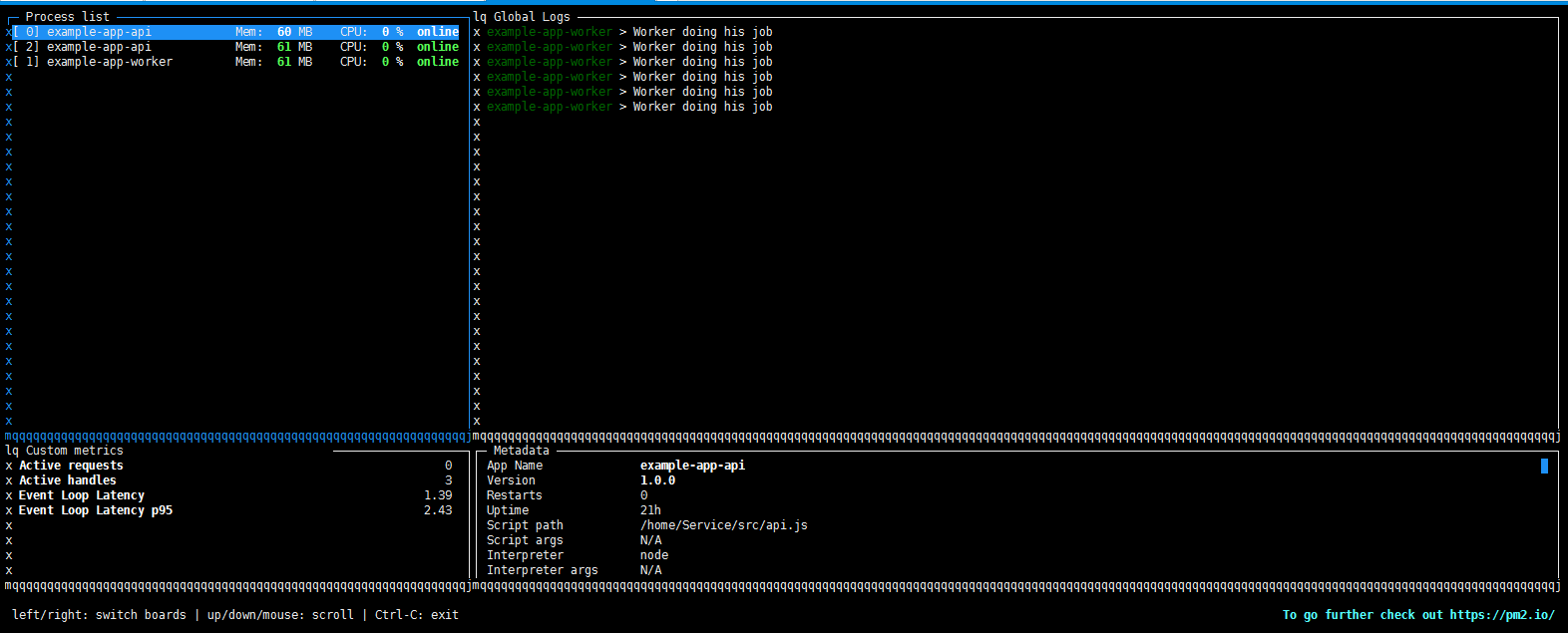
It has support configuration env variables to hook it up to any elasticsearch server for creating your dashboard.Ĭlick here to learn more: Slow API Troubleshooting


When you have this module installed through npm, you can run the command create-stats-dashboard to create the dashboard.
#Monit nodejs install
To do this, we created the module create-stats-dashboard that makes it very easy to install the dashboard. Now that you have your stats sent to your elasticsearch server you can install the dashboard for Kibana to visualize it. You can even preload your node.js process with this module, requiring no changes to your codebase.Ĭlick here to learn more: CREATE-STATS-DASHBOARD: His module instantiates the stats event emitter for you, so you simply use this module, and you’re ready to go. The next module, Stats-to-elasticsearch, makes it very easy for you to send your stats from in process to your elasticsearch server. You can also configure this to add tags to your stats, and it generates a unique id per emitter so you can track down stats for a particular emitter.Ĭlick here to learn more: STATS-TO-ELASTICSEARCH: It contains useful information about the current host machine, the node.js process itself, Garbage Collection within the process and information about how long it is taking your event loop to empty itself and move onto its next iteration. This simple module is used to create a simple event emitter object that emits an event called stats. We needed a tool to generate statistics about our running processes, so to do this, we developed the Stats module. We open sourced a few modules for the real time dashboard, and Ill go over each one.Ī link to all resources is at the end of this post. If you have a mismatched version, you will see an error like below: Note: Running Kibana and Elasticsearch on a different major version is not supported. To our package.Installation will take about 5 minutes to finish but once done you should be able to bring up Kibana in your browser at What it looks like after successful installation.
#Monit nodejs code
The only changes we need to make are one line of code in our package.json and one line in our main JavaScript file.
#Monit nodejs full
The full monitoring picture includes information and performance metrics of our JavaScript runtime (V8), performance and behavior insight into our services, and service dependencies of all of our services, databases, and messaging systems as distributed traces.įigure 1 – Instana Distributed Trace for Node.js application with multiple Sub-Spansīest of all, as a developer, we have minimal code changes – to be precise, 2 lines of code. js monitoring tool, we can get the full picture of our infrastructure. This happens to all … of … us, unless we use automatic monitoring 🙂 Automatic Node.js Monitoring for Developersīy utilizing Instana’s Node. If we manually added monitoring code, you can bet that some important metrics were forgotten and will need to be added for the next time there is a problem. We want it to stay as clean as possible, while maximizing the insight that is possible to gain.Īnother common issue occurs when a problem crops up and we begin our analysis. No developer loves to clutter their just finished piece of art (we all know we produce art, don’t we?) with monitoring code and performance metrics. This is not as easy as it might sound, especially looking at source code already written, but also new programming work.

We have to understand how services perform, we need to understand when to scale up or down (cost effectiveness), and we need to understand if there are issues with the systems – not tomorrow, not in an hour but right now. Running large scale enterprise applications requires not only scalability and a critical mass of users, but also making sure the services are available and performing as expected. There is another set of major challenge though… Node js Application Monitoring,Visibility and Observability Furthermore a better package manager which provides support for dependency trees and licensing will be a necessity, too – common requirements in the enterprise world.
#Monit nodejs how to
Not only in terms of investing more thought into which dependencies we use, but also looking into how to keep those systems maintained for years. Over the course of the next few years the way we write applications for Node.js will have to change though. After all those years, however, it has finally made it to the mainstream.īut with bigger projects and more companies using Node.js in their enterprise systems, comes new responsibilities and challenges. These days it is impossible to find a single developer who doesn’t know about Node.js.īeyond the hype of the last couple of years, it must seem to a lot of people that Node.js is dead since not every conference is packed with node.js talks anymore.


 0 kommentar(er)
0 kommentar(er)
